Mar 28 - Apr 25, 2024
Galerie Kandl
curated by Livia Klein
Duo with Titania Seidl
photography by Simon Veres
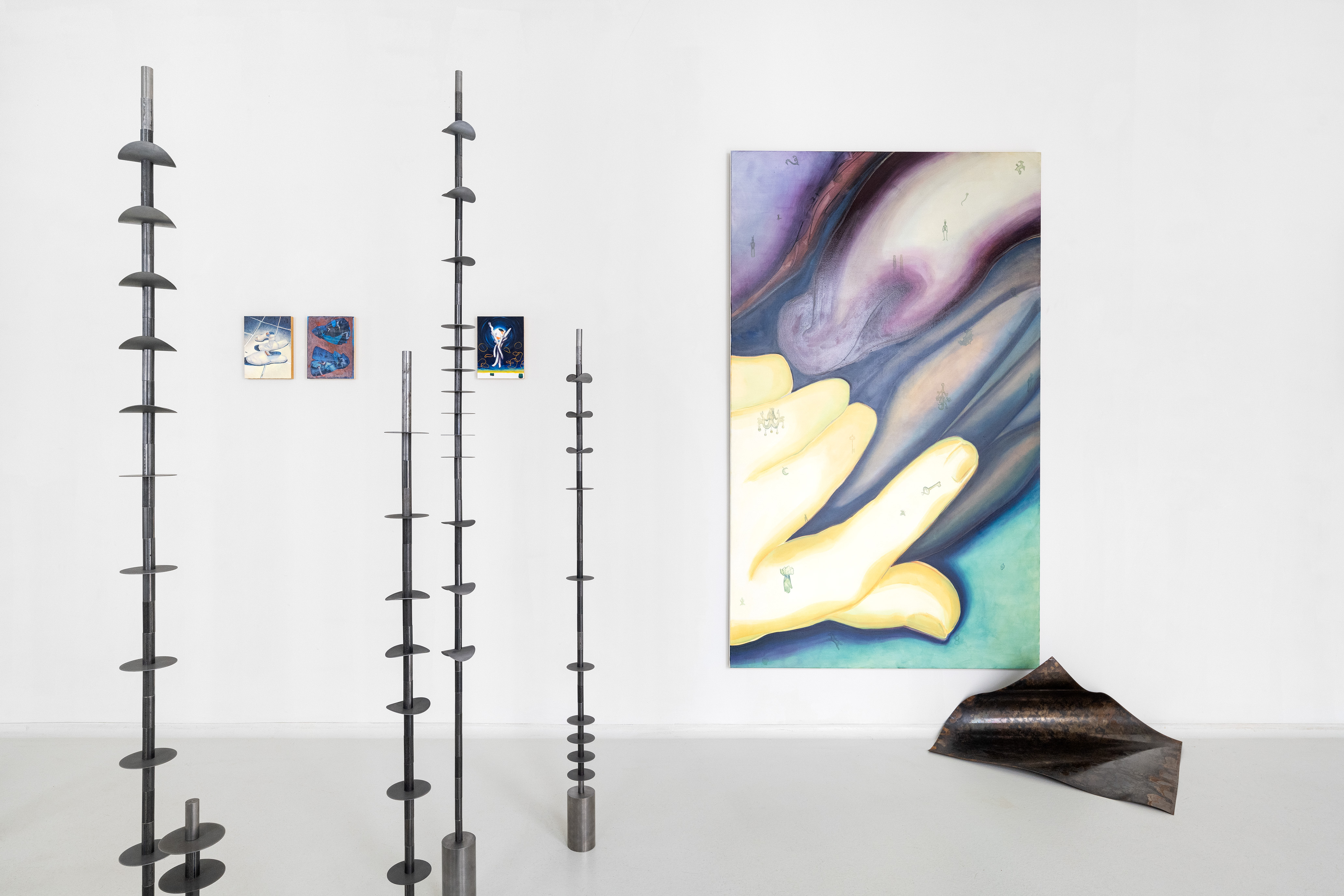

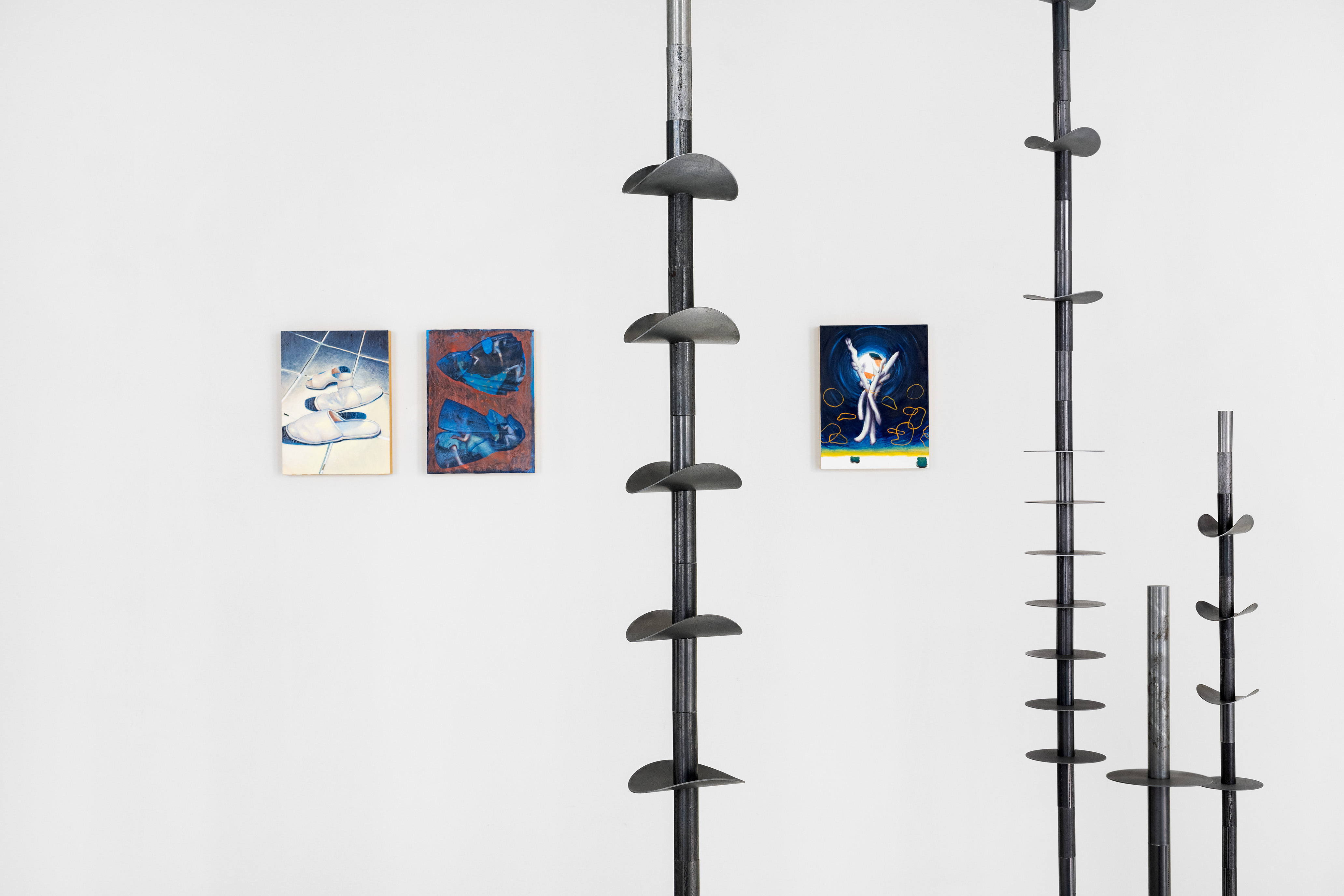
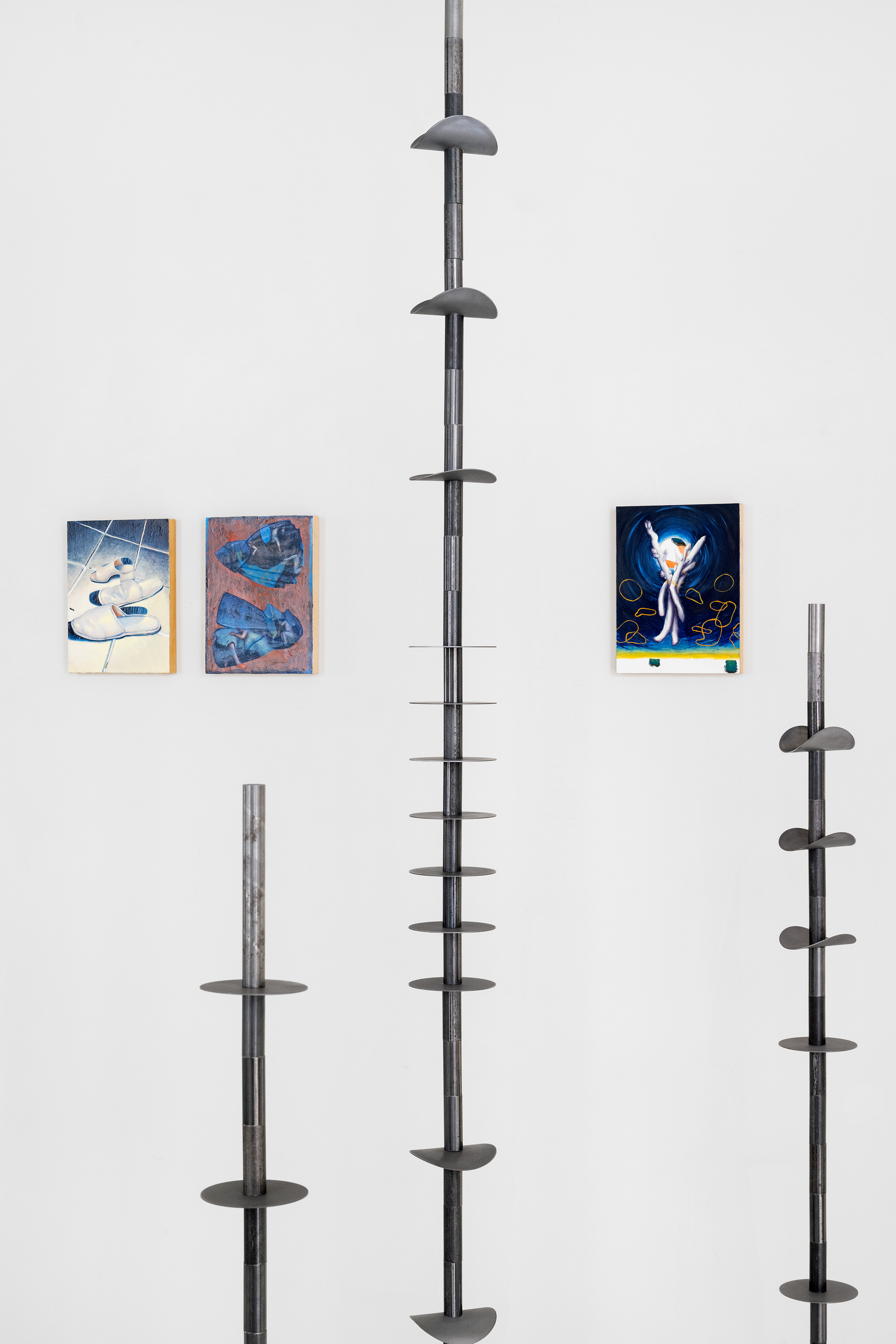
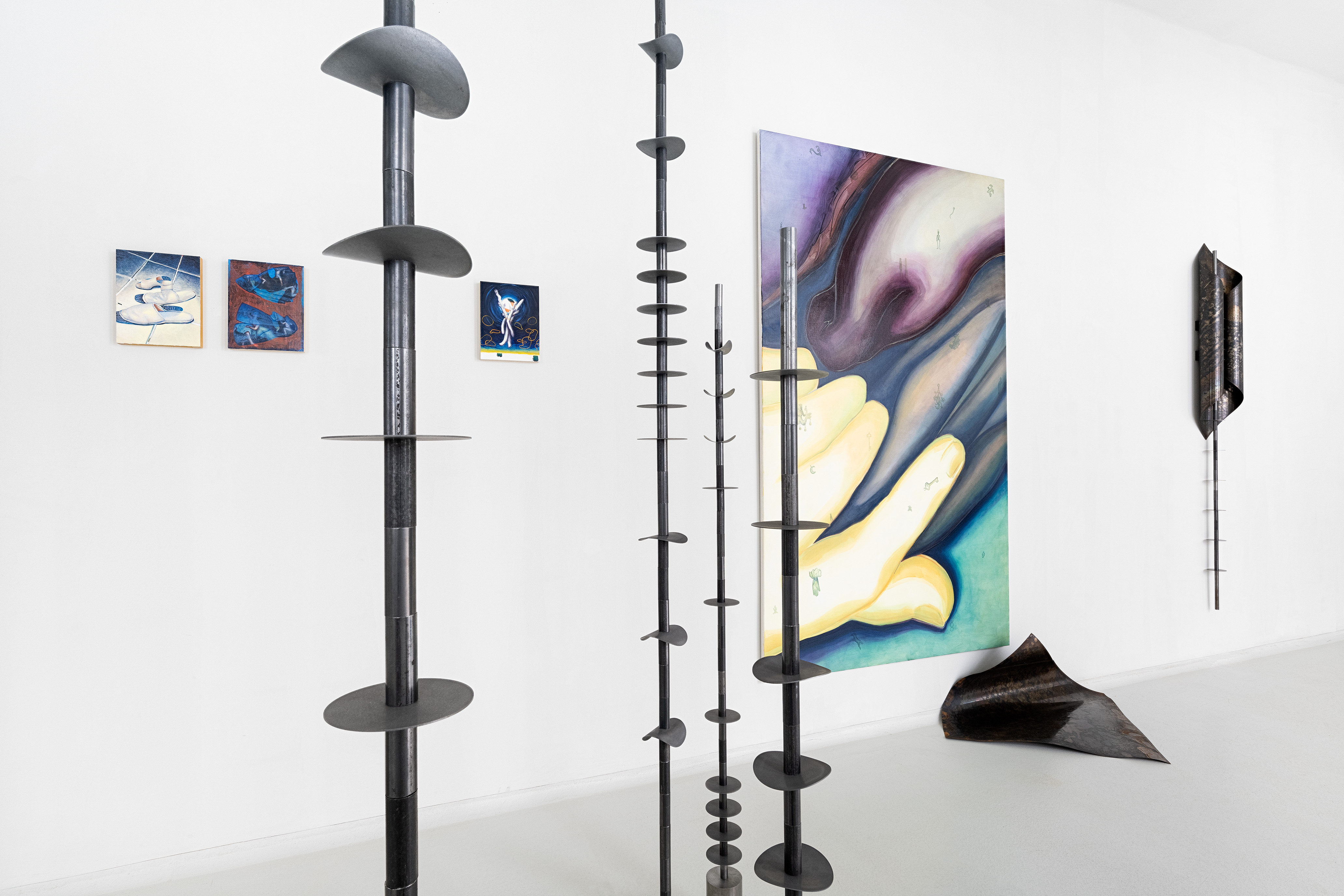
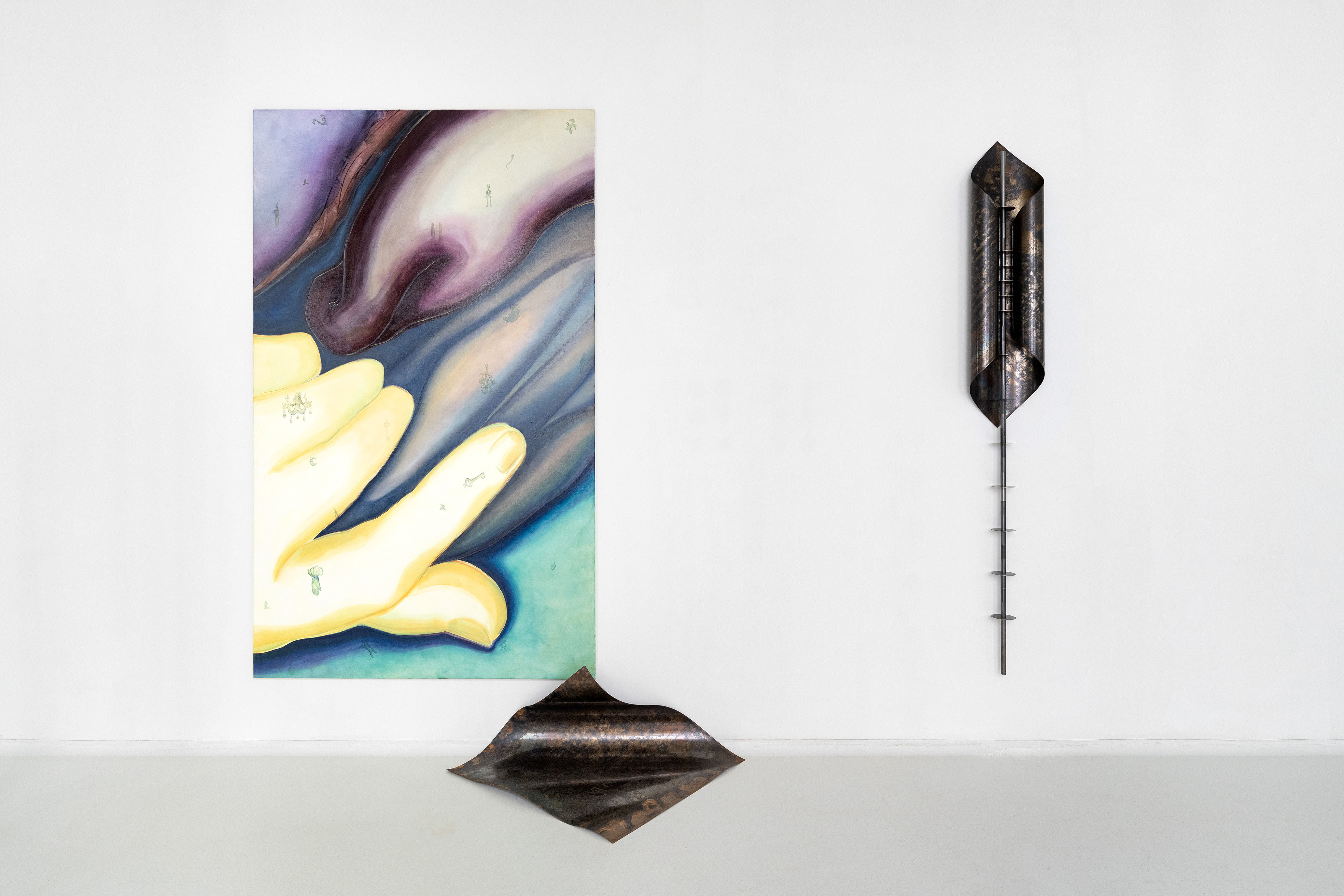
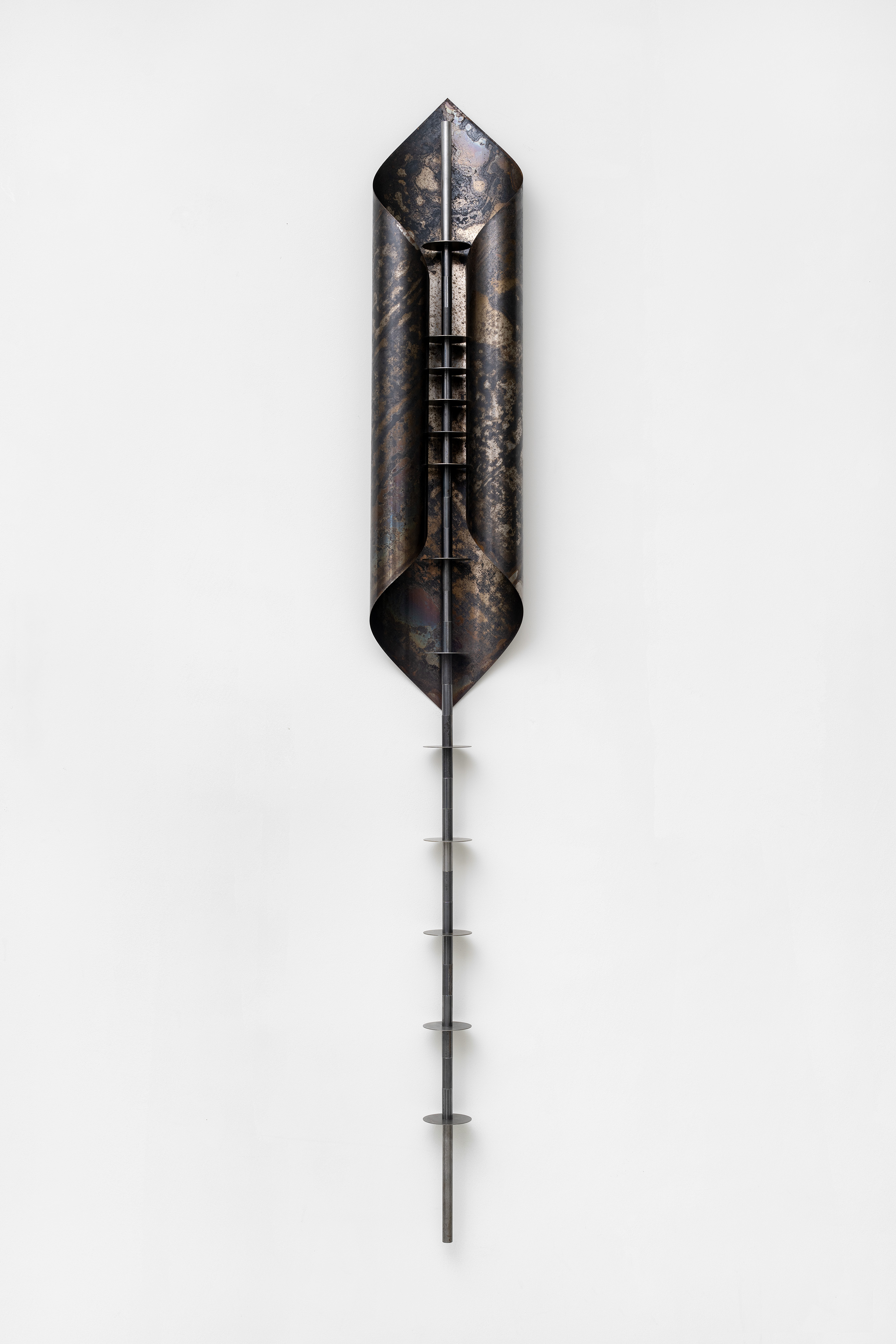
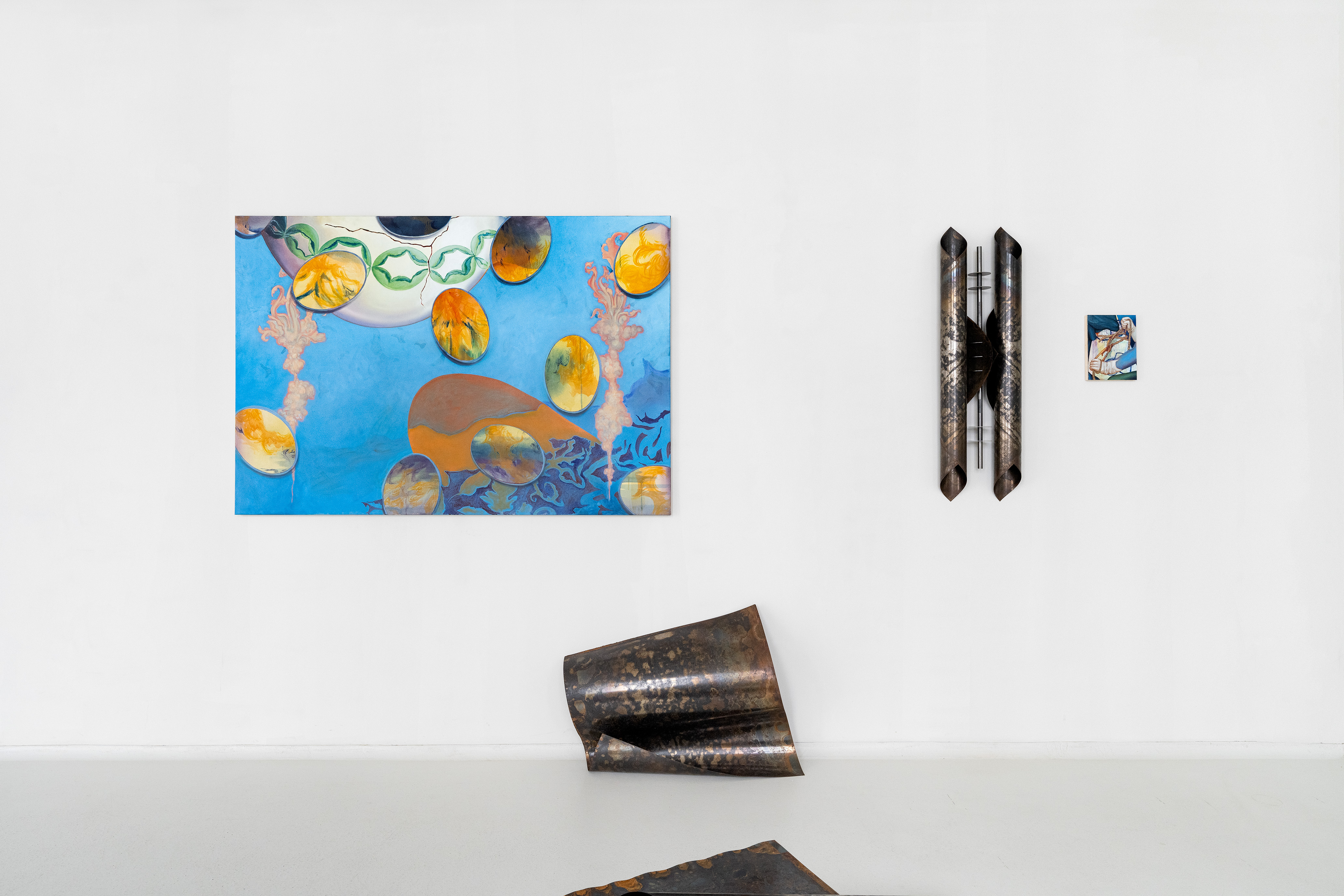
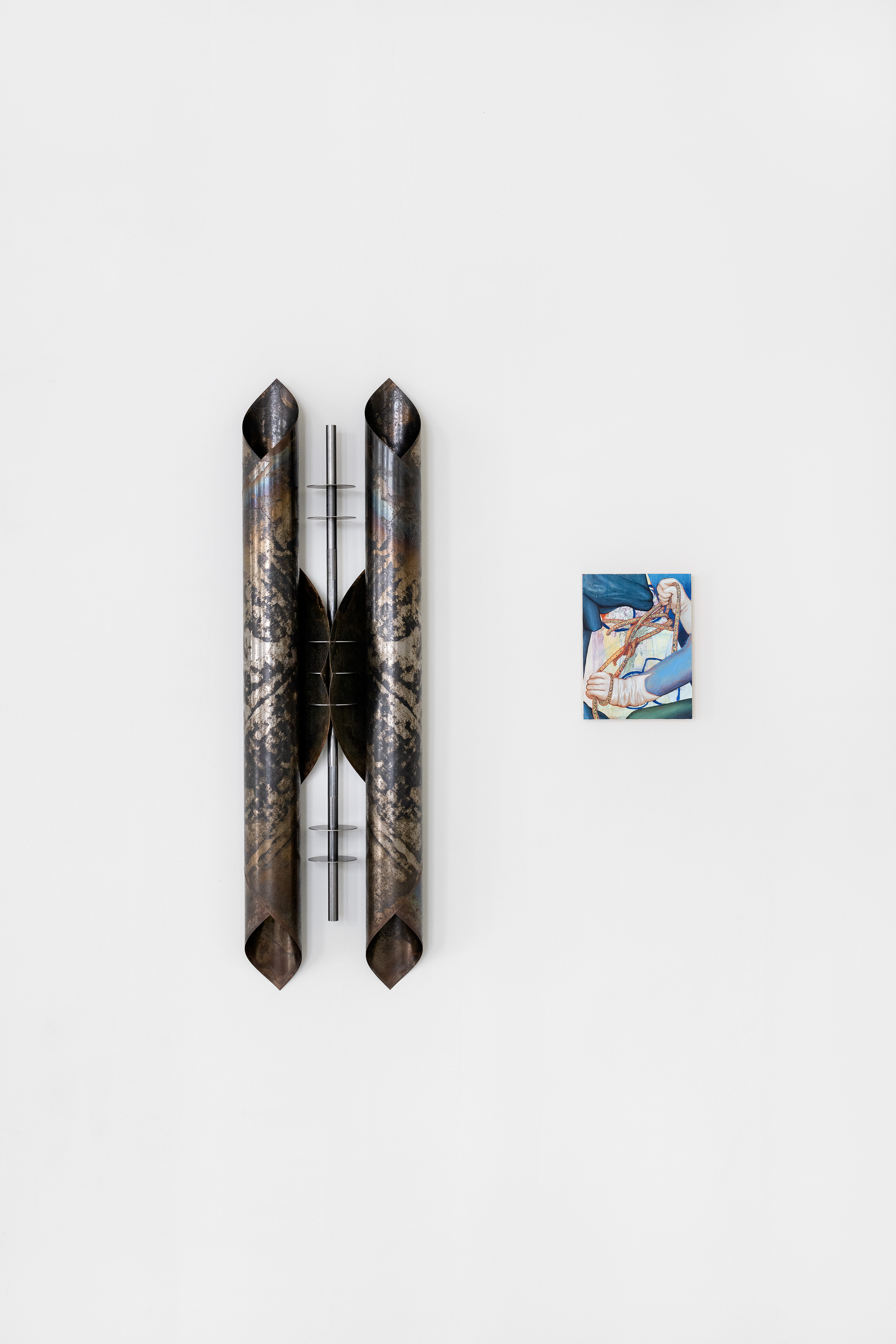

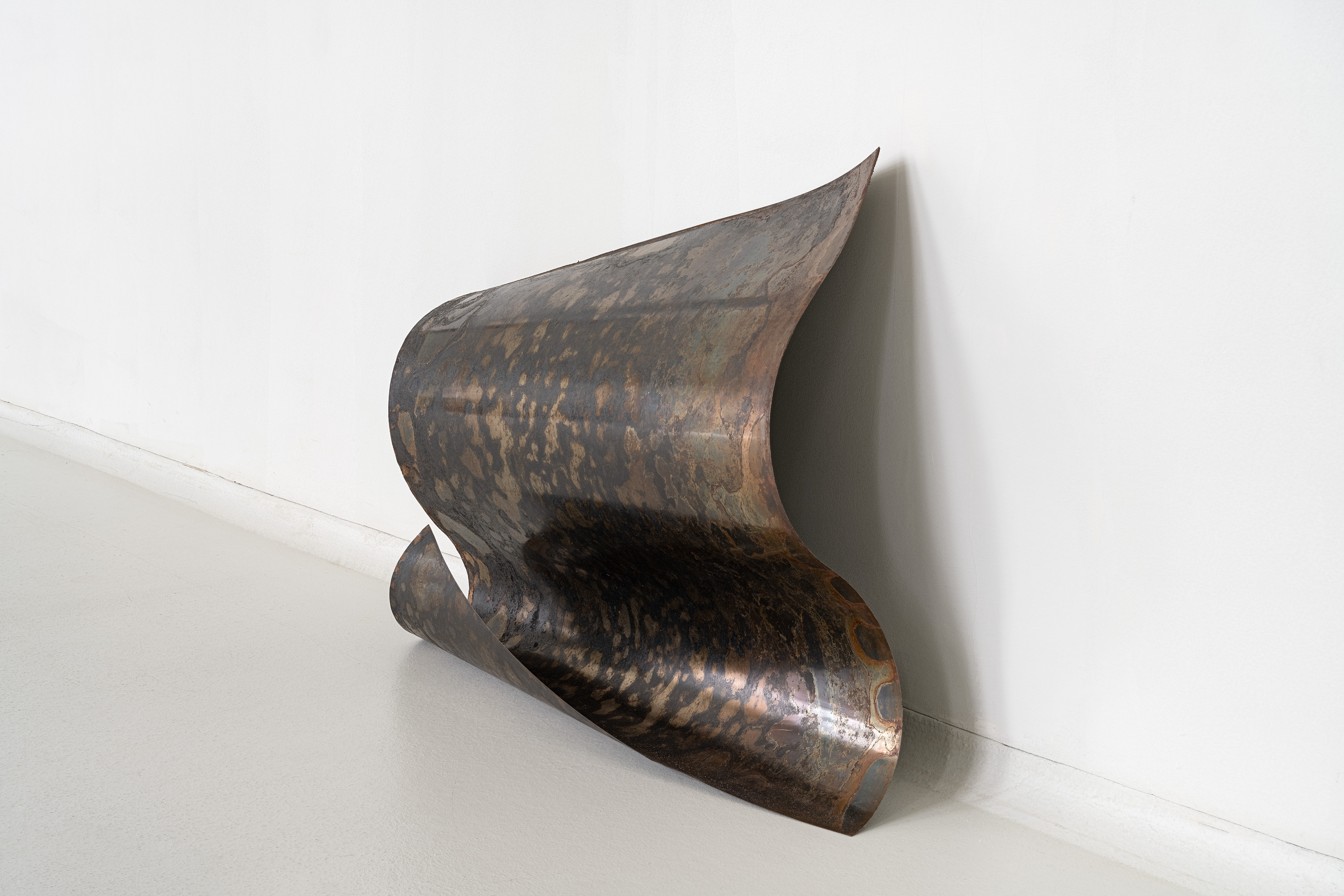
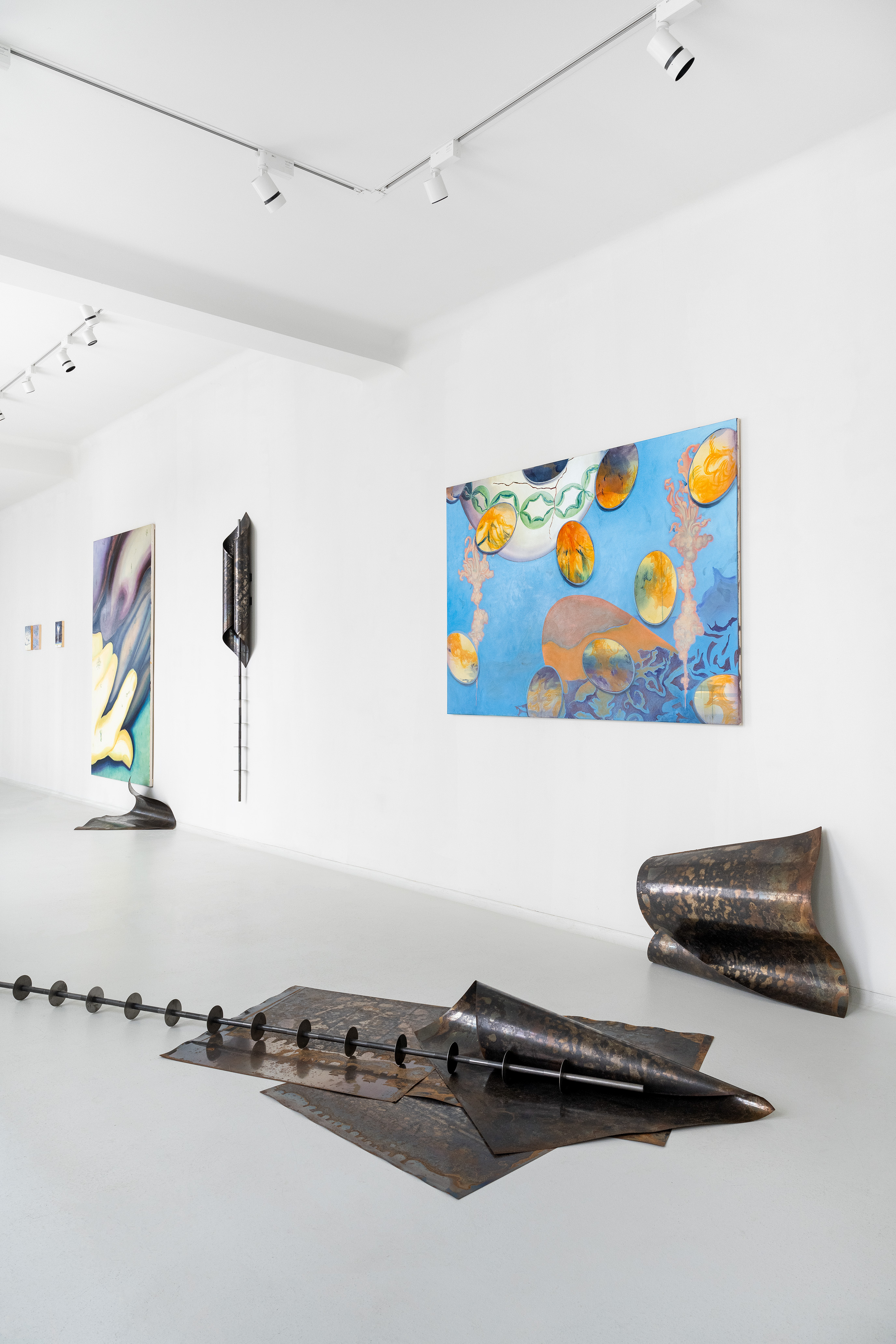
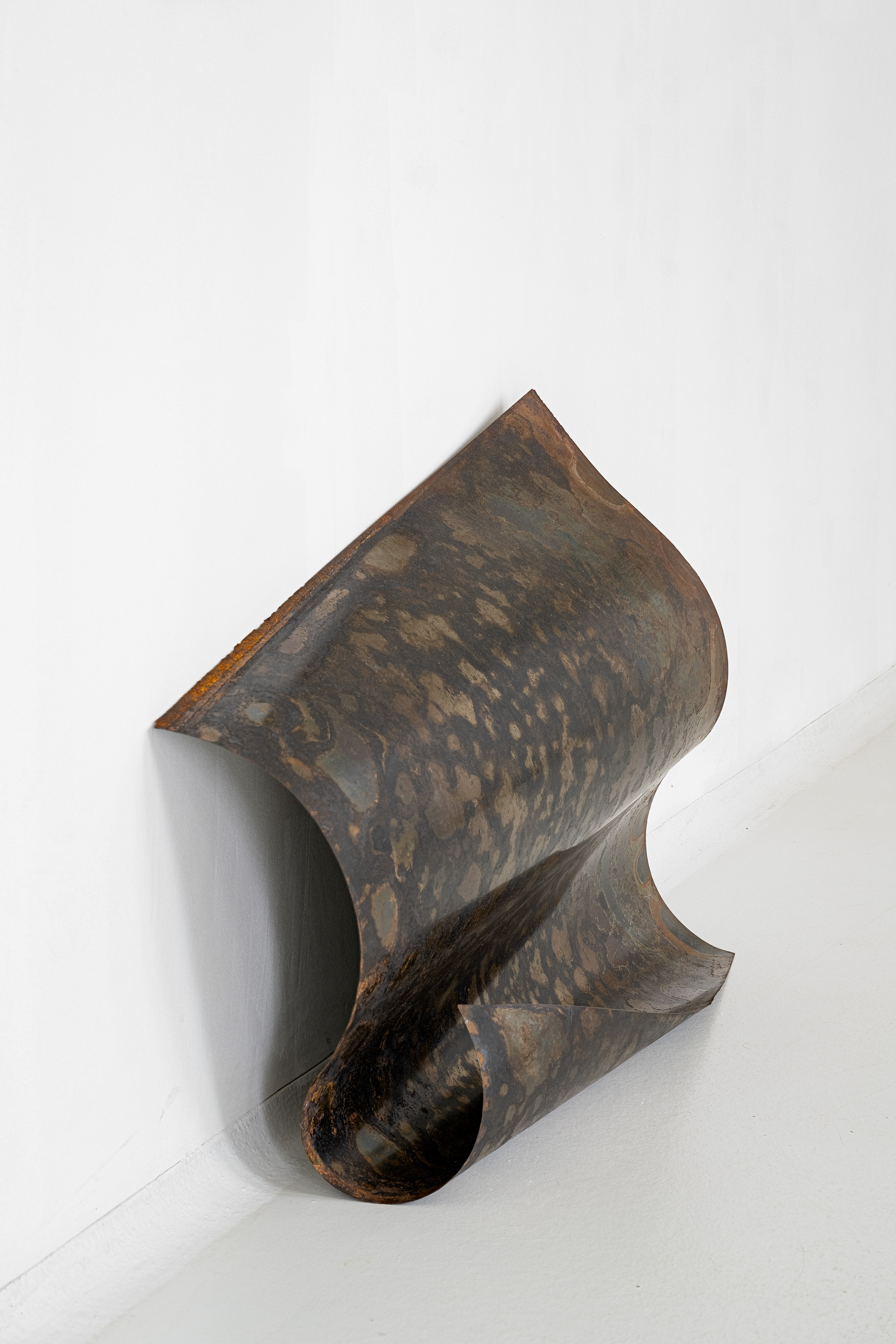
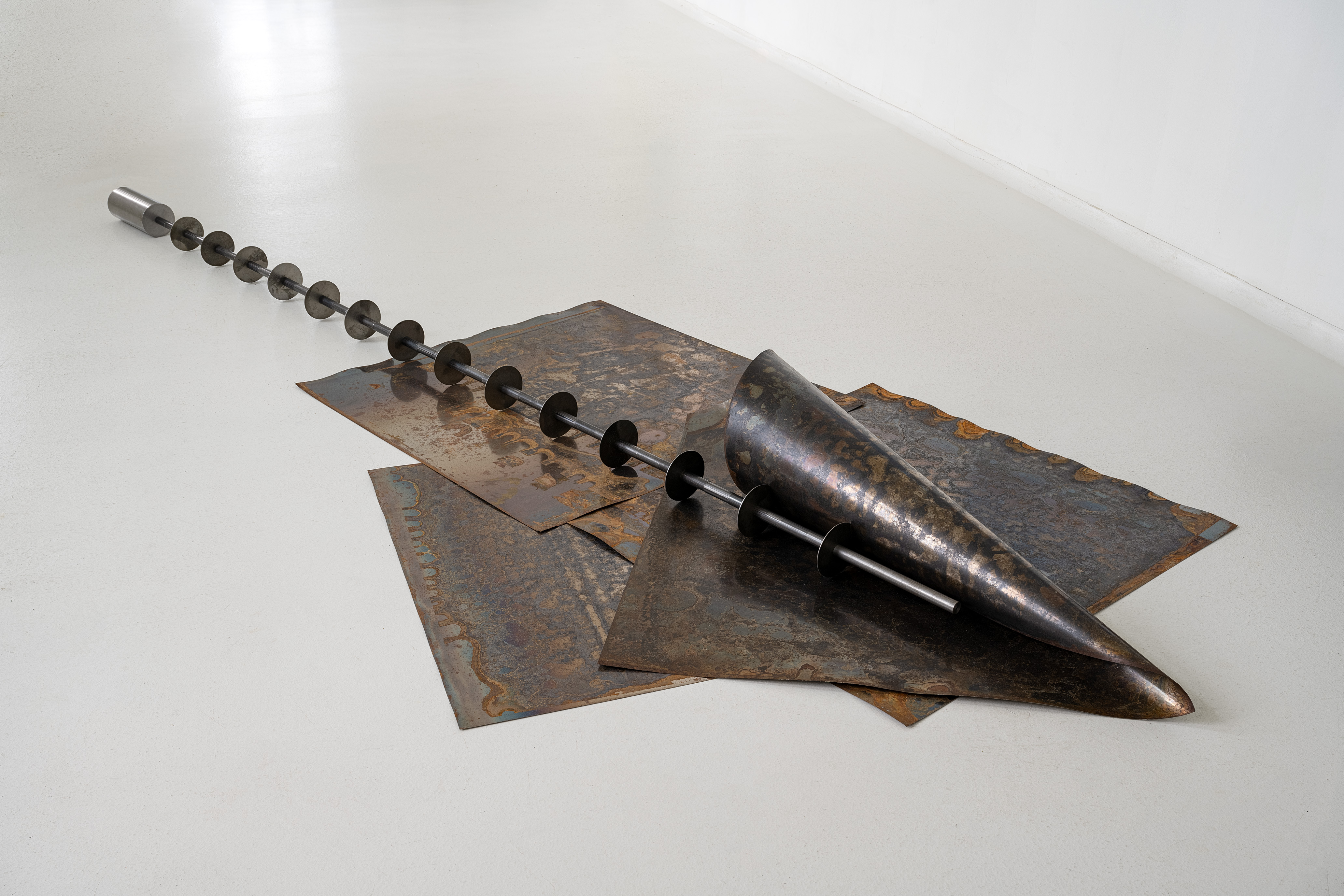
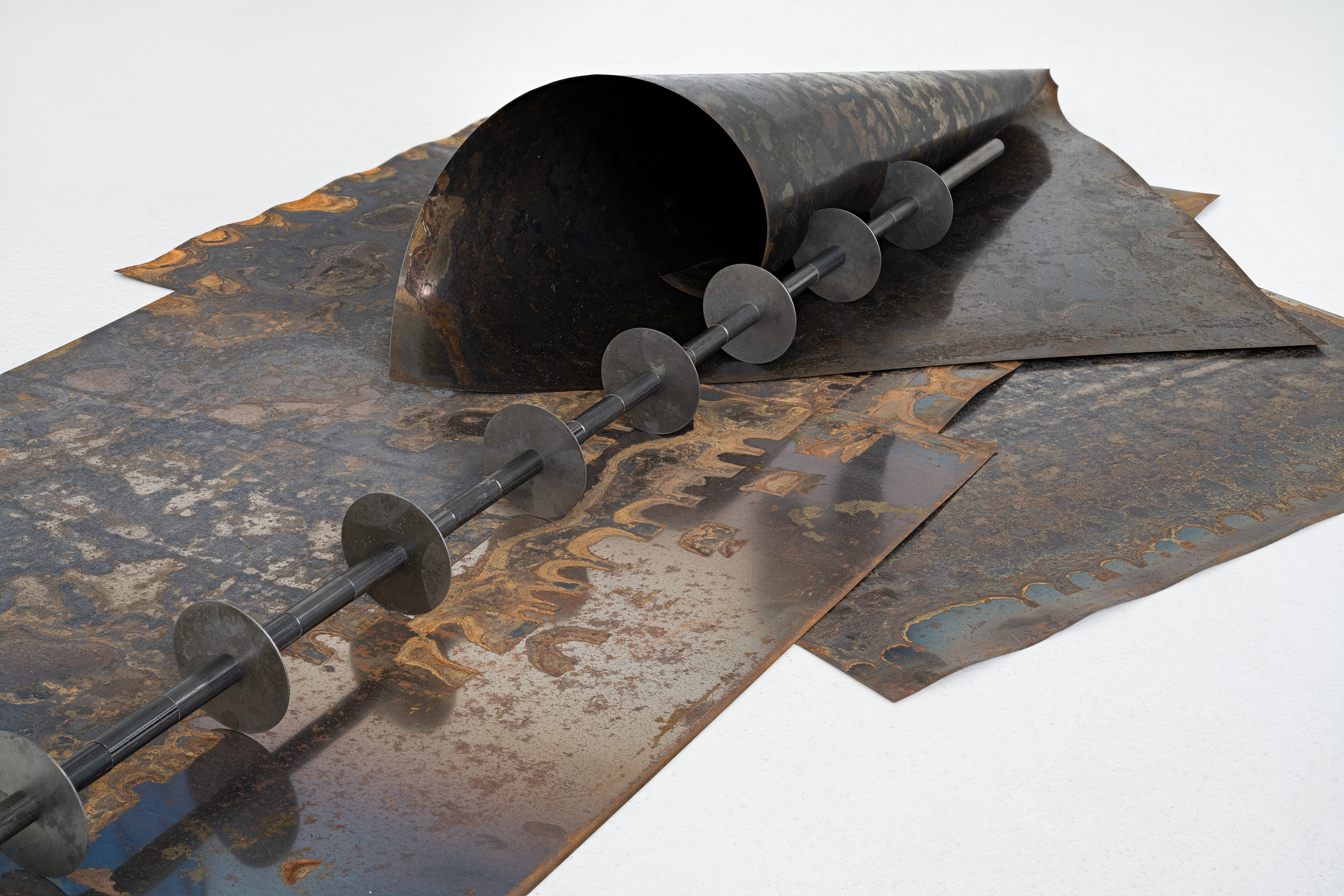
In her artistic practice, Bianca Phos delves into the interconnectedness between the human body, societal structures, technological advancements, and the environment, prompting an exploration of the essence of humanity and our relationship with the world around us. Through her work, she immerses herself in the complex network of somatic relationships and dependencies, grappling with concepts such as wound and trauma.
Phos perceives the wound as a pivotal moment for reimagining subjectivity as a dynamically interwoven phenomenon intricately linked with the diverse dimensions of other corporeal entities, machinic apparati, and material configurations. Drawing from the discourse of New Materialism and posthumanist ideologies, Phos probes the concept of technology as a human prosthesis—an extension and enhancement of the self. In this exploration, the artist views the human body not as inherently distinct from non-human entities, but rather as material-discursive phenomena, shaped continually and inexorably (Karen Barad). Receptive to the subtle surface characteristics of our times Phos unveils possibilities, evoking inspiration from the realms of science fiction literature and cinema, to unfold potential scenarios and relational dynamics that transcend conventional dualistic narratives and cast speculative glances towards the future. Attentive to the intricate web of human connections to various organic forms, technological constructs, and material manifestations, her inquiry extends to the nuanced vocabulary necessary for comprehending and navigating the subtleties of the wound arising from the transcendence of human exceptionalism.
Themes such as vulnerability and dynamics of power are central to the artist's work, exploring the inherent capacity of materials and organisms to reshape their environment and absorb past experiences. Since 2020, the integration of Cutting Instruments has influenced Phos' artistic practice profoundly, symbolizing a dynamic interaction between creation and destruction. The receptivity of materials to external interventions are creatively explored in recent works featuring spring steel, prompting contemplations on spatiality and temporality.
Departing from conventional perceptions of steel as an emblem of unyielding strength and colonial dominance, Phos reconceptualizes the material by using spring steel as a malleable substrate susceptible to corrosion, embodying a transience that underscores the fluidity of materiality and memory. These artistic endeavors epitomize a nuanced interrogation of materiality, encapsulating the dialectical relationship between permanence and impermanence, solidity and porosity, inviting viewers to reconsider the latent narratives embedded within the physical fabric of existence.
One aspect involves the curvature of the spring steel plates, while the other maintains their original morphology. They undergo bending and binding, with Phos pushing the material to its utmost limits, ultimately securing it at the pinnacle of its tension. This formidable application of force, crucial for material manipulation, presents a poignant juxtaposition against the poetic resonance emanating from the works. At times, forces converge towards the pivotal rod, while at others, they radiate outwardly, enveloping it. Within the fragility of these installations lies a profound exploration of vulnerability, prompting a reevaluation of our perceptual engagement with the material.
Bianca Phos adeptly navigates the narrative trajectory of her oeuvre, perpetually poised to adjust and recalibrate its thematic underpinnings. Invariably responsive to the contextual dynamics and interrelations between her works or their discourse with external elements, Phos engages in a continuous process of reorganization and reinterpretation.
Livia Klein, 2024